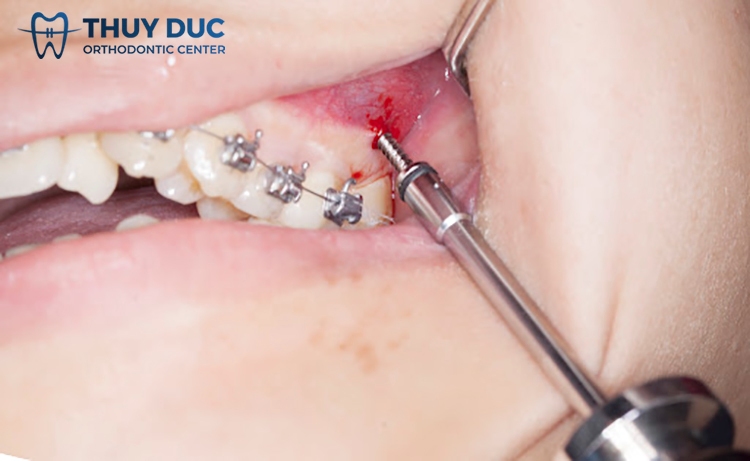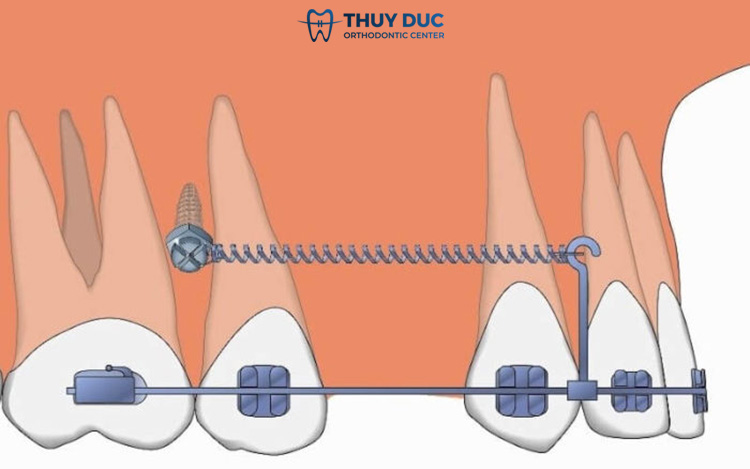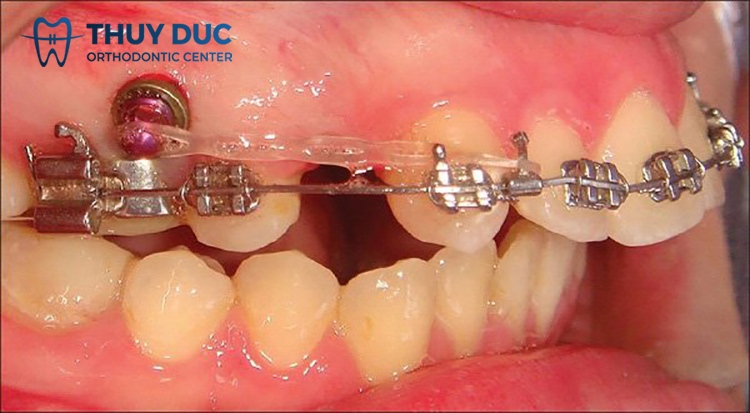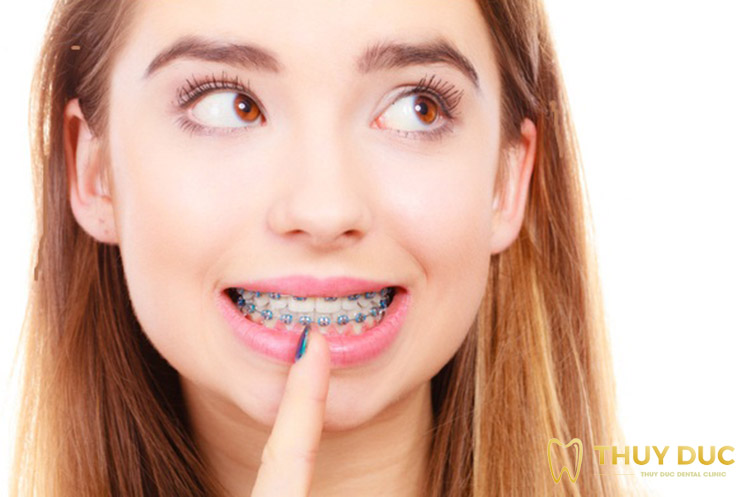Screws are one of the devices used in orthodontics. After screw insertion, many people experience swelling and inflammation, causing pain and discomfort. In this article, let’s learn how to effectively fix inflamed braces screws!

[hair]
In what cases do braces screws need to be inserted?
Dental braces screw or minivis is a small, spiral-shaped device made from body-safe titanium material. The screw has a length of about 12 – 16mm, diameter of 1.4 – 1.6mm and is attached to the patient’s jawbone to increase the effectiveness of teeth straightening. However, not all cases need to use minivis.
Normally, doctors prescribe braces to be inserted in the following cases: protruding, bucking, pulling the tooth extraction space, missing teeth, too hard jaw arch, gummy smile…

The effects of screw insertion in braces are as follows:
Is an anchor point to move teeth to the correct position on the jaw, adjust bite, and effectively treat underbite.
Creates stable traction on misaligned teeth.
Increase treatment effectiveness and reduce treatment time.
However, even though it is made from a material that is completely integrated with the body, there are still a few cases where inflammation occurs after the screw is inserted, causing pain, discomfort, and preventing the patient from eating. So what causes this situation? The next part of the article will discuss this issue.
Causes of inflammation when inserting dental braces screws

During the screw insertion process, patients usually do not feel too much pain because they are injected with anesthetic. But after the anesthetic wears off, you will feel quite painful. If the body adapts well, there will be no inflammation and the pain will be gone in about 1-2 days. However, some people after having the screw inserted experience swelling, redness, pain in the area around the screw, sometimes accompanied by a slight fever. The cause of this phenomenon is:
Normal reaction of the body
Unlike braces, wires or bands that are only attached to the tooth surface, miniscrews are inserted directly into the jawbone, although very shallow, it is still an invasive procedure into the bone. Therefore, if you see swelling and redness where the screw is inserted, this may be a normal reaction of the immune system. After a few days of getting used to it and taking care of it properly, you will no longer feel uncomfortable.
Irritation to screw components
For people with sensitive skin, there may be irritation to the components of the screw, leading to inflammation. Initially, there may be some pain at the screw insertion site, the next few days will be accompanied by pain and tenderness. If this condition persists and shows no signs of improvement, you should contact your doctor for assistance.
Improper dental care
After screw insertion is a quite sensitive time, so you need to have proper, scientific care to avoid gum irritation. Otherwise, it can also cause pain and swelling. Some habits that can cause inflammation after screw insertion are: eating hot spicy foods, brushing teeth too hard, and hitting the area where the screw is inserted.
Wrong screw insertion technique
Screw insertion is a basic procedure in orthodontics, but if not performed by a skilled practitioner, the screw may be inserted incorrectly: the screw is inserted close to the root of the tooth, causing pain in the gums and teeth. In addition, if the procedure is not performed properly, the tools are not sterile or the teeth are not cleaned, it can lead to bacterial infection causing pain and swelling.
How to fix inflammation when inserting braces screws?
Use red alcohol to disinfect and reduce inflammation: When you see inflammation at the screw insertion site, you can take some medical cotton, soak it in red alcohol and dab it, do this 2-3 times. During the day, after a few days the inflammation will gradually disappear.
Gently clean your teeth, including the screw head: When inflamed, the screw area is very sensitive to external factors. Therefore, you need to clean your teeth gently, avoid brushing and rinsing too vigorously. However, you still need to keep your teeth clean, especially around the screw head, to avoid leaving food residue. How to clean the screw head is as follows: Use salt water soaked in medical cotton, slowly wipe the screw and the surrounding gum area.
Take medicine as directed: Pain and swelling will slightly affect your daily activities. But note that you should not use medicine on your own, you should consult your doctor before taking and take the correct dosage as directed!
Eat soft, liquid foods, avoid hard and chewy foods to avoid making you feel more pain. Once you feel okay and get used to it, you can go back to eating normally.

See a doctor when necessary: Contact your doctor when necessary for guidance and proper treatment if the pain is not minimized after implementing the above methods. At this time, the doctor can treat inflammation, clean or replace another screw in case you are irritated by the screw’s components.
Frequently asked questions
How many days does it take for the pain to go away after getting braces screwed in?
After the anesthetic wears off, you will begin to feel pain, but the pain will only last about 1-2 days. When eating or speaking, there will be some problems. After a few days, when you get used to it, you can eat and drink normally. It is also important to note that each person’s level of pain and adaptation is different, so it is difficult to determine exactly when you will no longer have pain. You just need to pay attention to cleanliness, eat soft foods, and if anything unusual happens, contact your doctor for help.
What should I do if my dental braces screw is loose?
Screws that are loose for a long time are at risk of falling out, so if you see a loose screw and are not sure, you need to go to the dentist to have the screw replaced and reattached. Loose screws can reduce orthodontic effectiveness so they need to be treated as soon as possible.
How many braces screws does a person need?
The average number of screws for an orthodontic case is 4, divided equally between the left and right sides. There are also cases where only 2 or 3 screws are needed.
Do clear braces require screws?
Not only braces but also clear braces also need screws. But braces with transparent trays have greatly limited the use of minivis. To know if you need screws inserted, you should go directly to the dentist to receive specific advice.
Swelling and inflammation when inserting braces screws can be easily resolved if you have the right treatment. Hopefully the above information has helped you better understand this issue. To avoid complications when getting braces, choose a reputable dentist for peace of mind!




